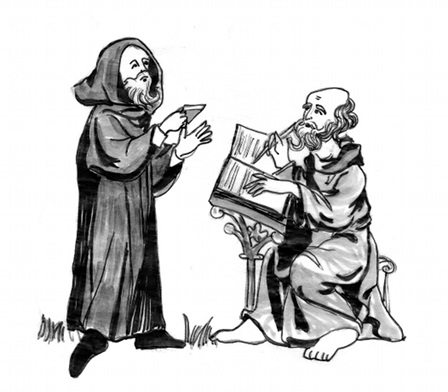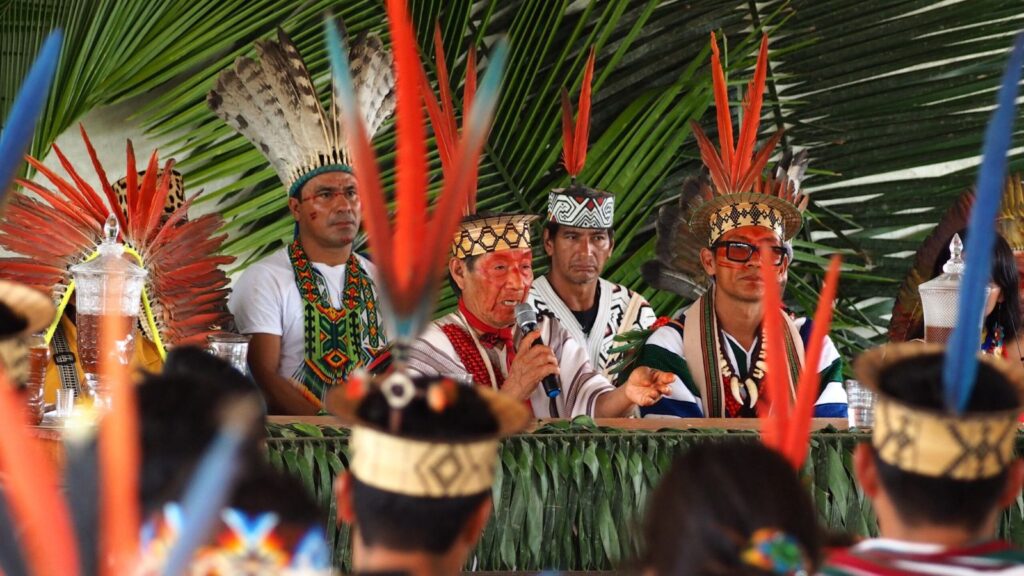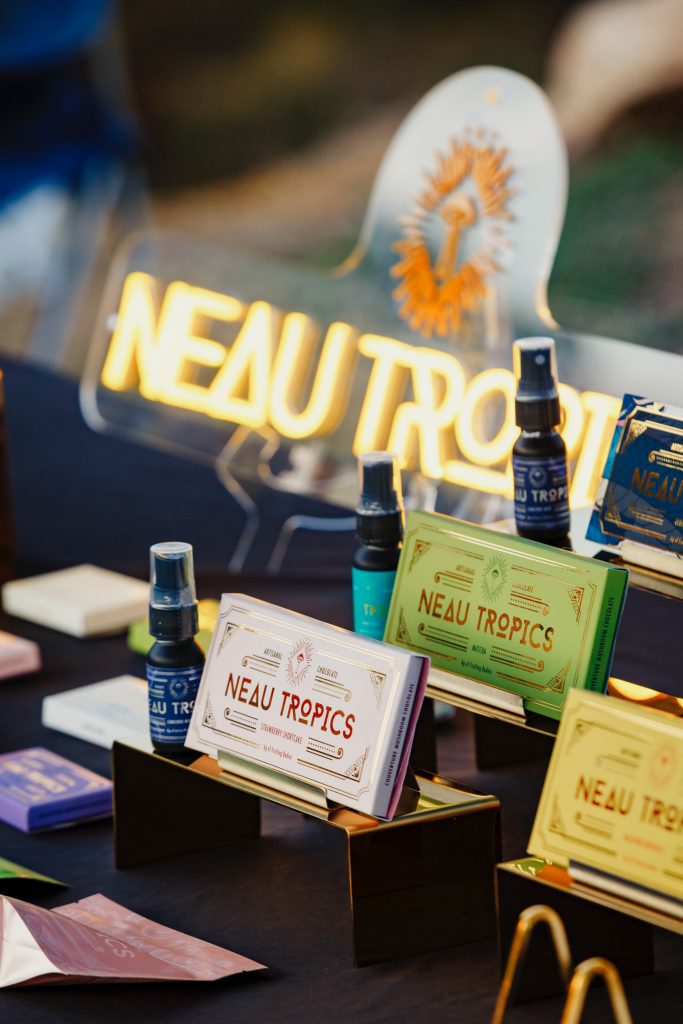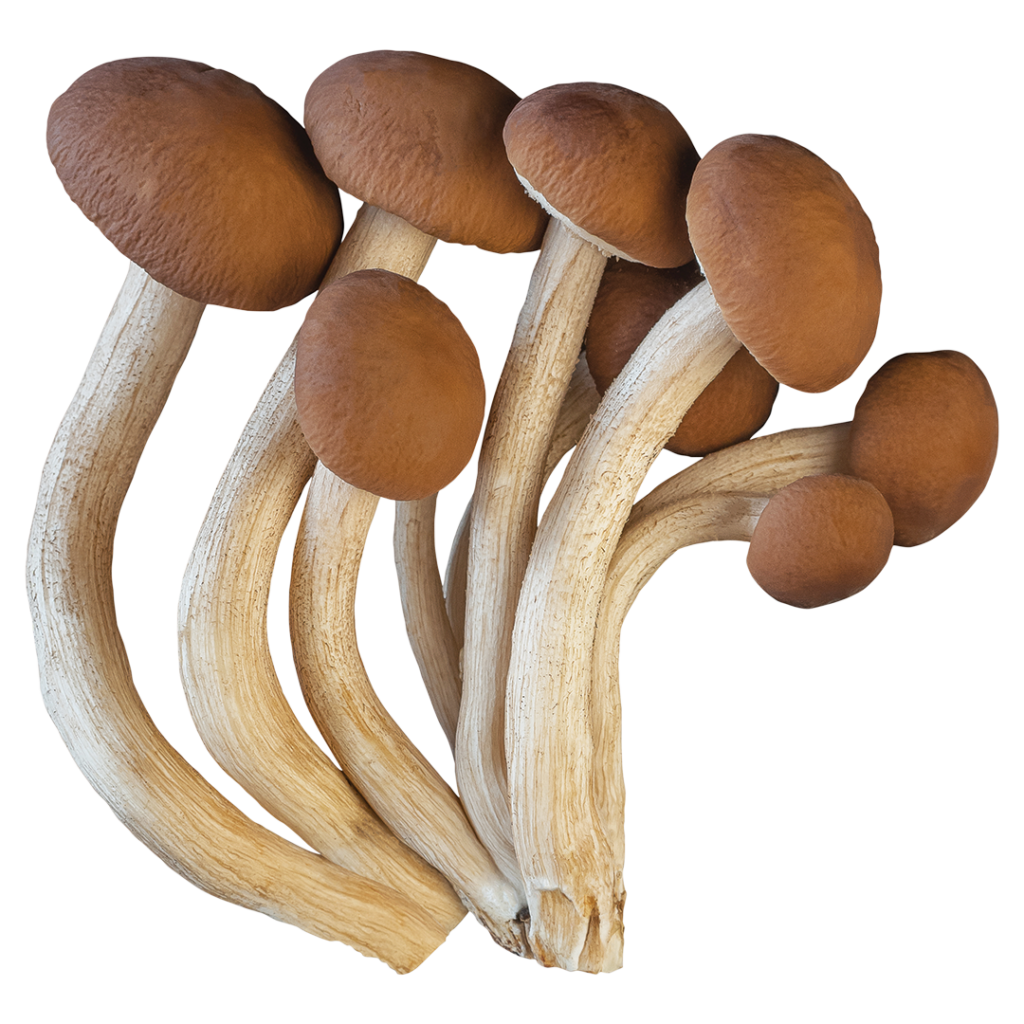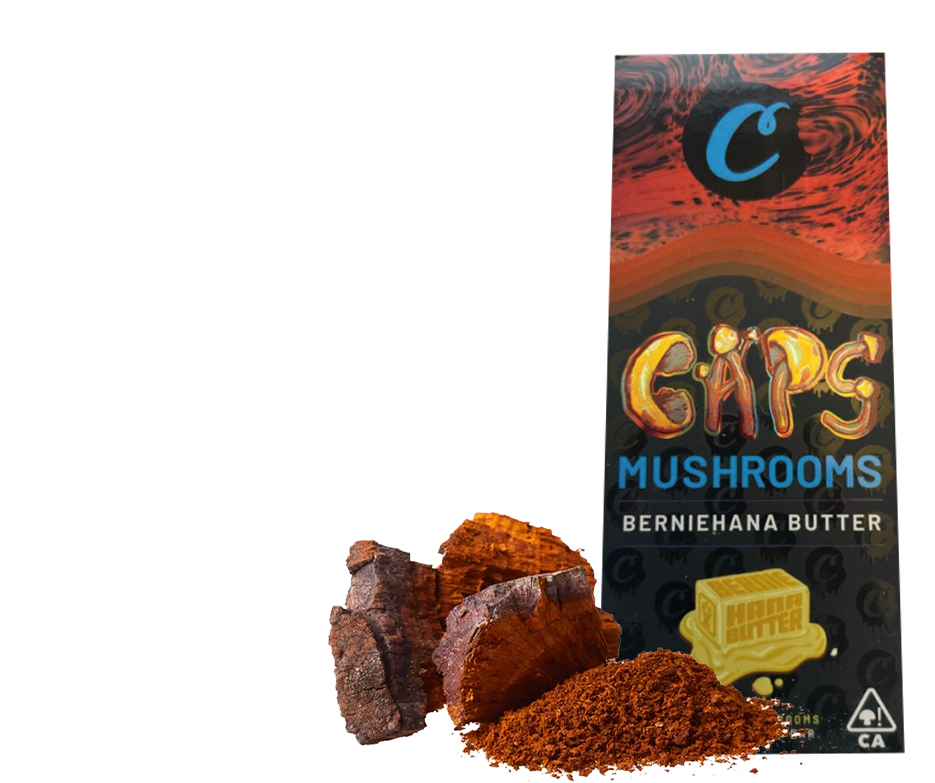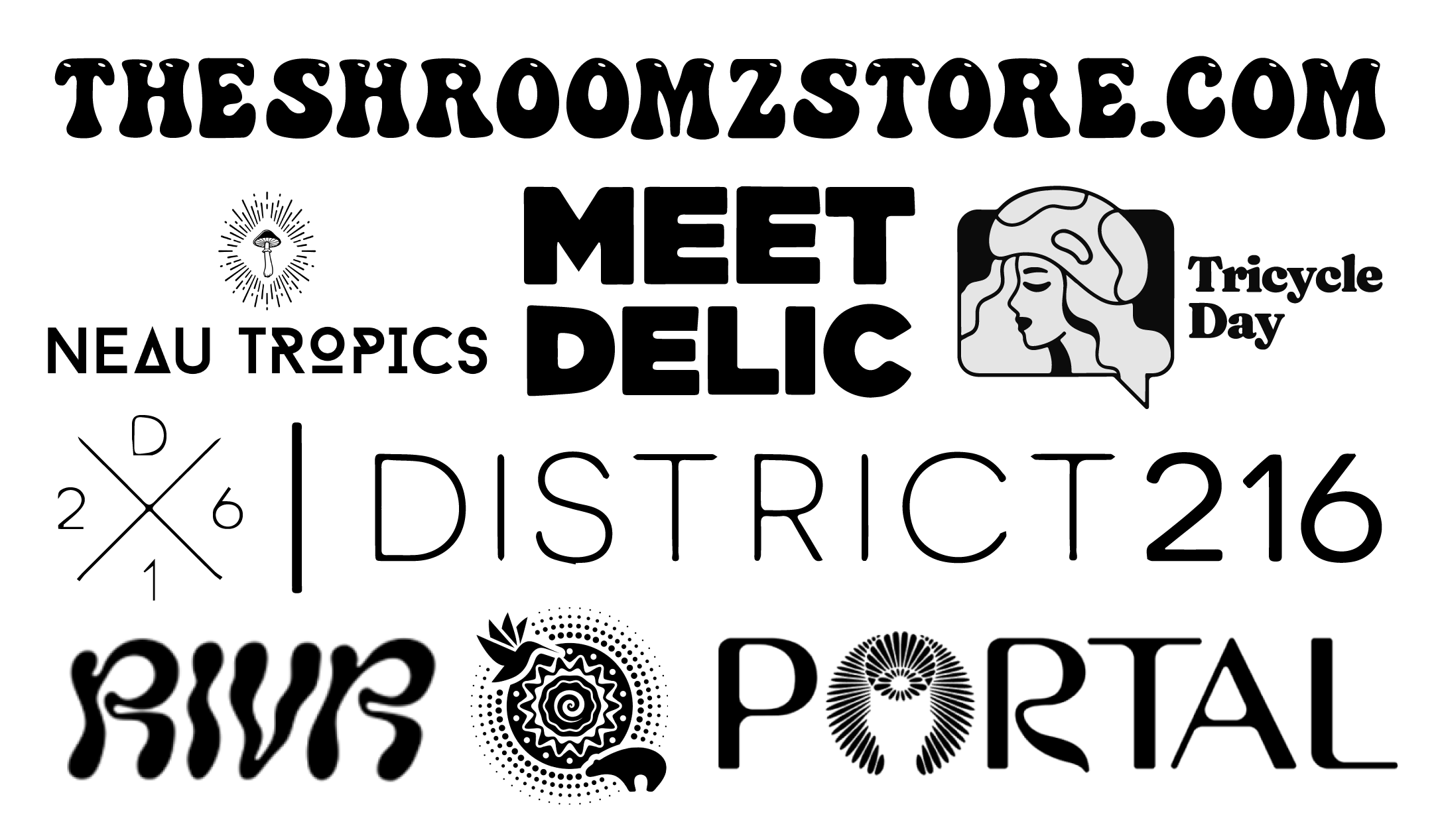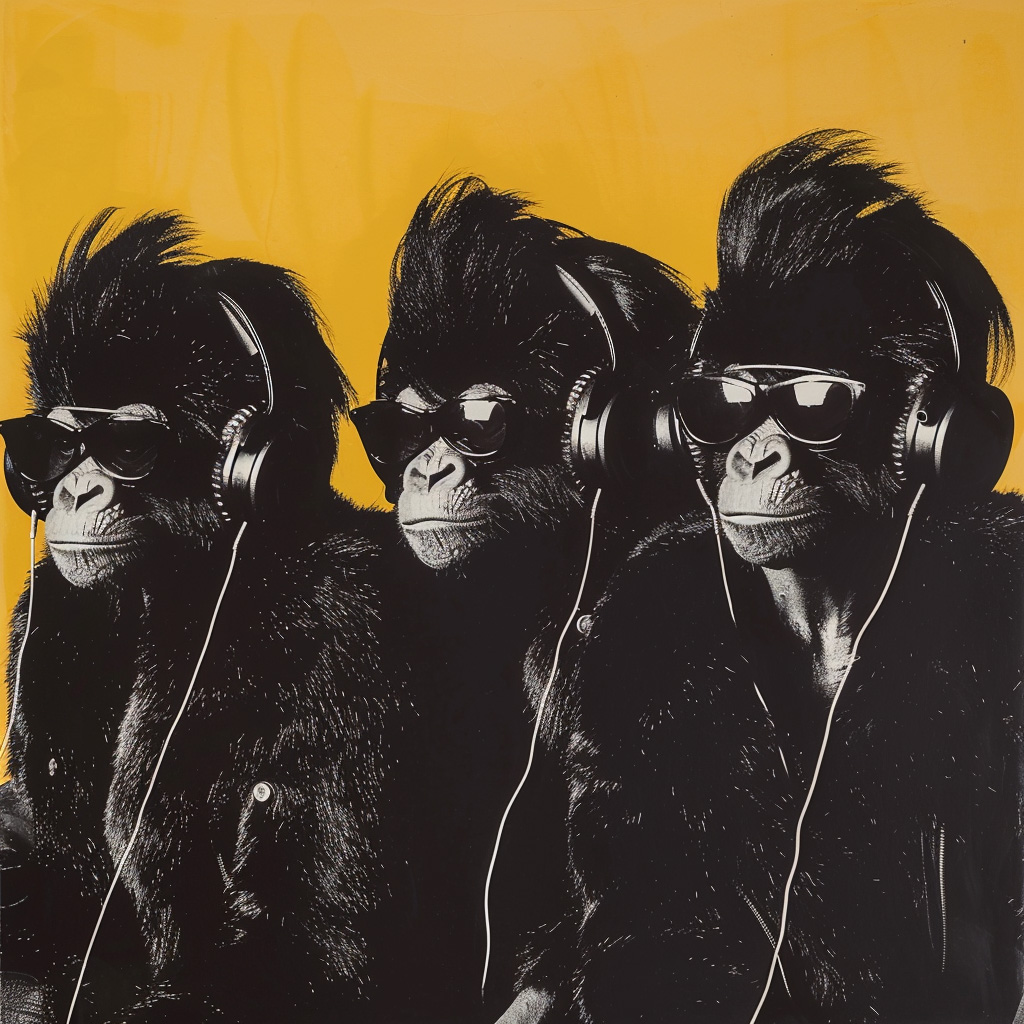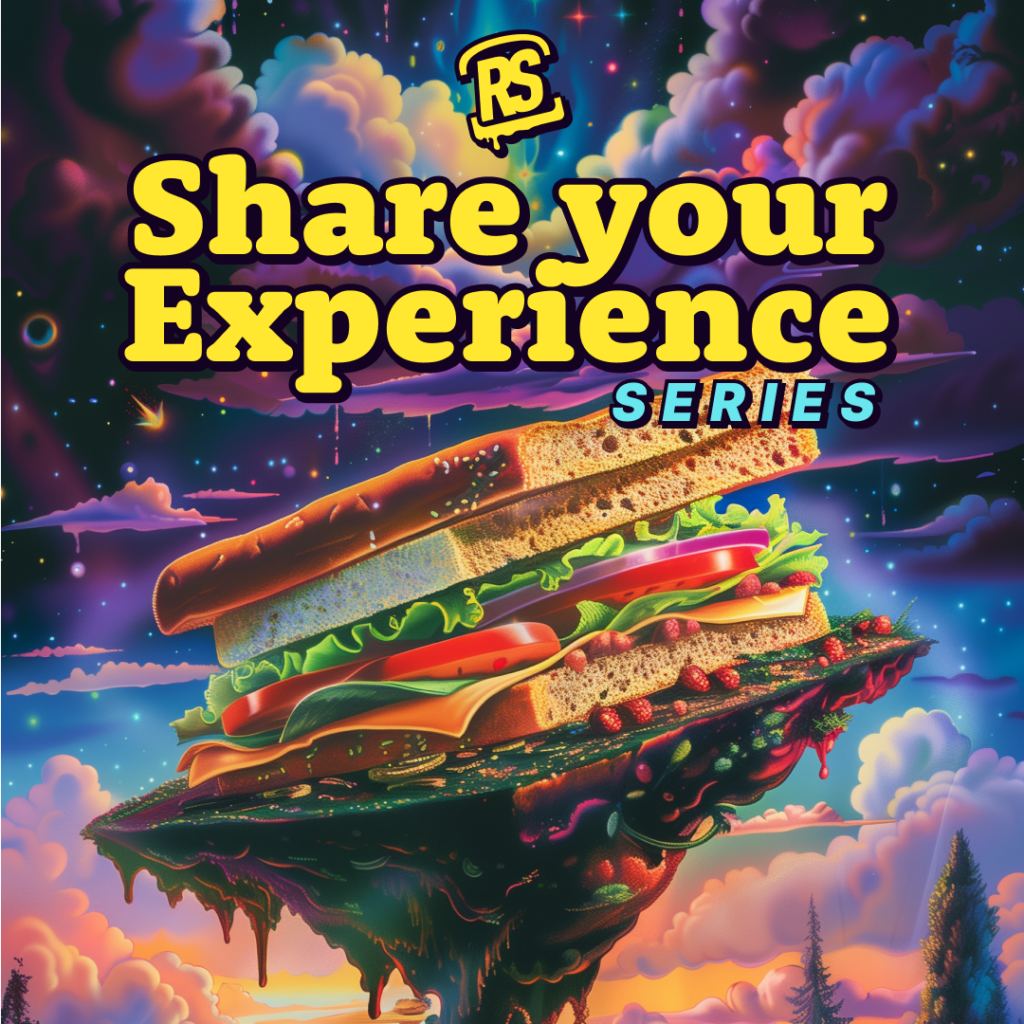I recently corresponded with Robert Tindall, now located in the cacophonous mestizo wilds of the Peruvian Amazon, about his new book, The Shamanic Odyssey: Homer, Tolkien, and the Visionary Experience.
J.P.: Robert, can you explain the genesis of this book?
R.T.: The Shamanic Odyssey can be mainly traced back to a conversation Susana and I had with our teacher of the vegetalista shamanism of the Amazon, the Ashanincan curandero Juan Flores. It happened when we were engaged in a very traditional diet deep in the rainforest, where Susana and I were living in isolation drinking shamanic plants and subsisting primarily on roast green bananas! Flores had tramped back to visit us, and sitting together by the stream there, the conversation turned to the mythic — and quite real according to him — beings that inhabit the Amazonian waterways. As Flores described the behavior of these sirenas, I was suddenly struck by the deep parallels between their seductive behavior and that of the Sirens described by Homer. Flores had never heard of the Odyssey, yet when I described the story of Odysseus' ordeal in the orbit of their rapturous song, Flores nodded his head and said grimly, "That's them, alright."
I had already been observing a number of intriguing parallels between the ancient mythology of the Greeks and Celts I had studied at the university and the contemporary cosmovision of peoples in the rainforest, but this conversation stuck with me.
Upon our return to the United States after our year-long immersion in the vegetalista tradition, I had a chance to spend some time teaching the Odyssey, and it was then I began to recognize that the text is shot through with indigenous and shamanic cultural elements: shapeshifting, visionary journeys, plants with resident divinities, masters and mistresses of animals, the symbiosis between plant/spirit/shaman, animal becoming, sacred topography — the list went on and on. The case became particularly intriguing when Susana and I began analyzing the descriptions of the therapeutic effects of bardic song in the Odyssey in the light of her research into the healing powers of Amazonian healing songs, i.e. icaros.
The Odyssey led me into an unfolding meditation on the indigenous mind at the root of the Western tradition. The more I followed up on details of the epic poem, the more terrain was revealed. Most notably this occurred around the mythologem of the clash of the Cyclops and Odysseus, which I see as a remnant of a very ancient oral tradition transposed into Homer's comparatively modern narrative. As a teaching story, like the Genesis account of the Garden of Eden, it appears to me to capture modern humanity's break with indigenous, or primal, consciousness.
Just as I was contemplating the ramifications of such a mythologem existing in the Odyssey at all, I encountered the peyote shaman Bob Boyll, the second major cultural informant for our book, and heard his account of the two roads of humanity he had been taught by the Hopi prophet David Monongue.
Again, like the uncanny parallels between the Amazonian and ancient Greek sirenas, Monongue's description of the two roads of humanity struck me as too similar to the cultural tensions illustrated in the clash between the proto-modern Odysseus and the indigenous Cyclops to be accidental.
To tell you the truth, I often felt like an amanuensis, those folks who during medieval times assiduously transcribed the oral tradition, during the writing of this book. In that sense, its genesis lies in converging lineages of plant-based shamanism, the research into icaros of my co-author Susana, ancient texts, ethnography, the work of anthropologists like Reichel-Dolmatoff, even the mythopoeic work of J.R.R. Tolkien.
On that topic, The Shamanic Odyssey covers three rather distinct areas of inquiry that might initially seem at best tangentially related: a Homeric epic, the work of Tolkien, and Amazonian shamanism. What is your own personal connection to each of these topics and why do you feel they are meaningfully linked?
I was asking myself much the same question during much of the writing of The Shamanic Odyssey. When I first sat down to write on the striking parallels between the mythology of the ancient Greeks and the cosmovision of contemporary Amazonian peoples I thought I was writing a short article. Sixty pages later I knew I had a hydra on my hands, and I wasn't able to lop off heads fast enough.
In order to explain how it was possible for the Sirens in Homer's epic and the sirenas of the Amazonian waterways to be so uncannily similar, I realized I needed to explore the consciousness underlying these experiences among traditional peoples. It turned out that there is a primal experience of "permeability," of a transparency to the elements, animals, spirits, stars, which has allowed human beings over the millennia to experience the sentience of the cosmos and derive valuable information from that communion. I eventually realized that this "primal mind," sometimes derided as "animism," underlies not only Homer's work, but is also markedly present in the works of other authors central to the Western European literary canon, such as Shakespeare and J.R.R. Tolkien.
Tolkien has been a great inspiration to me ever since I was a boy. The cosmovision of The Lord of the Rings made more sense to me than anything else in the barren Reagan-era culture I grew up in the 1980s, and during my studies of medieval literature in the university I found myself following in Tolkien's footsteps academically as well. Tolkien's express purpose was to re-inject the vitality of the pre-Christian oral tradition back into the enervated Western imagination. He termed his endeavor "mythopoeic," and some of his earliest writings are clear evocations of the primal mind of our ancestors. Given that my purpose was to revitalize the cosmovision of the Odyssey, I found myself enlisting the old master's support.
What do you feel is original in your analysis of the Odyssey and of Tolkien's opus?
I was a bit astonished as I researched and wrote The Shamanic Odyssey that I could encounter but a handful of commentaries upon Homer's poems that referenced ethnographical accounts of shamanic practices among indigenous peoples (the work of Classicist Carl Ruck and German philologist Walter Burkert being notable exceptions). Given the intensity of the shamanic negotiations, work with psychoactive plants, shape-shifting, and visionary journeys within the text, I simply couldn't believe that no one had bothered to connect those dots. I think this is a reflection of how truly impenetrable the ivory tower of academia can be to multi-disciplinary approaches. In fact, early on I was warned by the classicists I was consulting that my work would not be well received among academics. "Why?" I inquired. "Is there something wrong with my method?" No, I was assured. "We're just a very conservative lot," I was informed.
I gave up writing for a solely academic audience at that point. My goal became to invite the Muse to sing the Odyssey anew for this generation and time. I believe that we must re-familiarize ourselves with our indigenous roots, the life-ways of our own European ancestors, to address our current ecological crisis.
I also perceived a similar dearth of appreciation for the shamanic characteristics in Tolkien's work, and when it came time for me to write a sort of apologia for shamanic states of consciousness as valid ways of truth seeking, I found myself involved in a deep reading of Tolkien's last literary will and testament: Smith of Wootton Major. This novella is almost entirely neglected, and yet Tolkien set aside work on his treasured Silmarillion to compose it. I believe the story is about the nature of the creative/shamanic consciousness as Tolkien experienced it, and is his attempt to pass on the fay-star to future generations.
I think Tolkien has been cast in the mold of a brilliant academic with a marvelous, far-ranging imagination, yet a man of essentially modern rationality. I disagree. I think there's more to Tolkien's creative experience than is recognized.
Do you think the resonance between the Homeric epics and shamanism is especially strong and revelatory, or do you think other very early written texts from other cultures (e.g. Gilgamesh or the Vedas or early Taoist or Tibetan Buddhist writings, to cite only a few) are also replete with shamanic themes? In other words, are the shamanic traces in the Odyssey there simply because that epic appeared (as those other texts I mentioned also did) during the period of transition from an archaic, mythic worldview to a more utilitarian "modern" one in human history? Or would you argue there is something special about the Odyssey in that regard?
The only way I think the Odyssey is special is that it contains a mythologem, a tale from the oral tradition already quite old when Homer sat down to compose his poem that illustrates the rupture between primal and modern consciousness and forecasts its consequences. This motif, encapsulated in the clash between the Cyclops and Odysseus, is akin to certain prophecies indigenous to the Americas.
I would expect other literatures of the world to be replete with shamanic themes. How could they not be, given that permeable, shamanic interaction is profoundly characteristic of human beings? We've ended up in a narrow corridor of perception, one that privileges Cartesian consciousness as "normal," the standard by which the worldviews of other cultures are measured. Yet, in fact, viewed ethnographically, the modern style of perception is rather peculiar. Who in their right mind would believe in a dead, mechanical universe, and of themselves as the sole arbiters of the meaning of their existence?
Of course, the Odyssey is worth singling out for another reason. I've come to believe it is a sacred text for the West, or rather, it continues to be a sacred text, for the Ancients held it as such. I believe the Odyssey can function as a "well of remembrance" for our own age because the genesis of our modern psyche is so clearly set forth within it.
Do you feel a kind of cognitive dissonance in Tolkien's work between his obvious deep love of pre-Christian ancient European lore and his devout Catholicism, and between his wild imagination and his very tranquil life?
You know, I actually spent some time pondering on this. I don't believe Tolkien suffered a lot of internal conflict on this matter. Tolkien once declared, "I myself am a hobbit." That's about right. As long as he could hear the sound of his teapot whistling on the stove and could putter about the garden, he seemed to have the ballast to sustain the wild visions that came upon him. In fact, his very staid existence may have served that very purpose of grounding him.
It's important to remember that his concept of Mordor was forged during his experiences in the trenches of WWI. Tolkien had seen enough, in that sense, to justify a tranquil life.
You report your own involvement in both Amazonian shamanism and in the Native American Church (NAC). Do you find these two traditions easily complementary or are there any elements in either or both that make them difficult to reconcile with each other? And isn't it controversial for people who aren't Native American to participate in NAC rituals?
I was first drawn into the Native American Church, which utilizes peyote rather than ayahuasca as its sacrament, some years after Susana and my apprenticeship in the vegetalista shamanism of the rainforest. Although ayahuasca is being served up every weekend in various ritual contexts all over the West Coast these days, we found the culture of California neo-shamanism to lack a strong container. It just wasn't grounded enough in indigenous lineage and discipline.
The morning after my first NAC meeting run by roadman John Tyler, I stepped out of the tipi flap deeply relieved that a grounded, traditional plant medicine way was being preserved in the North. The keeping of the sacred fire, the songs, the focus on the prayer, and the devotion of the participants opened my eyes to the beauty of the way of prayer of the Plains Indians of North America.
It was also through that meeting that I met roadman Bob Boyll, who became the second major shaping influence, along with the aforementioned curandero Juan Flores, upon my understanding of the nature of indigenous, shamanic medicine. In fact, the second chapter of The Shamanic Odyssey recounts a healing of a severe degenerative disease, Chronic Inflammatory Demyelinating Polyneuropathy, initiated by Boyll in peyote meetings in North America and culminated by Flores in his ayahuasca ceremonies in the Amazon.
As far as I'm concerned, when the peyote medicine is prepared to inform a participant in a tipi meeting that he needs to go seek out ayahuasca down in the jungle for his healing, a mysterious synergy is being woven.
There are different lineages within the Native American Church. Some are closed to Euro-Americans, others are not. The founders of our particular lineage, which welcomes anyone who wishes to engage in its simple, family-based way of prayer, are held as beloved family relations.
I am deeply grateful to them. There is a vision of unity among peoples and a return to indigenous sensibilities in our prayer together. This "going native" among Euro-Americans, of course, is one of the themes that our book explores.
You make the case that indigenous cultures were more egalitarian and lived in far greater harmony with the natural world than we do, but while that may have been true of early, small-scale hunter-gatherer bands, aren't you romanticizing indigenous cultures somewhat? Didn't slavery exist among many Native American tribes? Wasn't warfare, and sometimes incredibly brutal violence, common, not just among the wilder plains tribes such as the terrifying Comanches but even among such politically sophisticated groups as the Iroquois, and certainly to a blood-curdling level among the ancient Celts? And isn't there a lot of very dark magic associated with most shamanic traditions?
Yes, predatory animism is chilling. Like nuclear weapons and chemical warfare, it should be totally banned.
Yet the Comanches certainly had their virtues. Besides being warriors, they were also masters of horses. As I have heard related in the Native American Church, the Comanche would often migrate with a large herd of horses from what's now western Texas down south to Mexico City, an epic journey through desert terrain filled with many potential dangers. They achieved this feat by constantly eating peyote and feeding it to their lead horses. In this way, they could commune more directly with the intelligence of their horses, and listen to the advice of the peyote spirit about what lay ahead in the landscape, where water sources were, etc.
It's this kind of communion with the sentience of nature that our work is trying to validate here. It's more difficult to engineer the genetic richness out of plants, to poison our waters with cancer-causing chemicals, and to invent nuclear bombs if you instinctually hold nature as sacred, and the elements as a holy expression of divinity.
Of course, there's always the tendency to romanticize indigenous people, which is the flip side of the coin whose other face degrades them into wild savages and monsters. Let's be clear: there is some very black magic and blood-curdling warfare practiced among native peoples, and even those practices were founded upon a sense of participation in a sacred cosmos.
This is why the Celts were conquered by the proto-modern Romans. For the Celts, individual combat was a sacred thing, the very point of a warrior's existence, and to relinquish that opportunity for mere modern efficiency in battle, fighting like an impersonal machine in the way of the Roman legions, was unthinkable!
So let's not throw out the baby with the bathwater. I once heard the Apache Martín Prechtel comment about the pervasive loneliness and depression in the West: "How can you be lonely when you're surrounded by plants and animals and other beings who you can always communicate with? You're never alone!" It's this communion with a sentient, vital cosmos that is the unacknowledged blessing of indigenous ways.
I think the seeds planted by the ancient Greeks and watered by medieval Christians (such as the Nominalists and Franciscan Empiricists) have borne their fruit in the modern age. Some of it is magnificent. Yet, as Tolkien demonstrated for us, we needn't be limited to Cartesian duality and modernistic belief systems. As the modern mind wanes, we shall hopefully return to our indigenous senses without any need to reject the significant achievements that the emergence of an individual, modern self has given us.
The Shamanic Odyssey is not a rejection of modernity — rather it is a call for the reintegration of our repressed indigenous selves. It's a call to awake to the great dream again.
You seem to accept fairly literally some of the "magical" experiences described by some shamans and other practitioners you interview-episodes of "animal becoming," of astral travel, of seemingly miraculous healings, of abduction by spiritual entities such as water spirits in the Amazon, etc. Are you convinced that these are objective phenomena, i.e. that these spiritual entities or forces are fully autonomous of humans and "real" in some way, or do you consider these phenomena too mysterious to fully understand and categorize?
"Real" is an elusive concept, especially in the world of shamanism.
I know I went through a painful shift of paradigm during my first year of apprenticeship in the shamanic traditions of the rainforest. As an educated Westerner, I had been open to Jung's ideas of archetypes and had experienced meditative states during my training as a Zen Buddhist, but my default setting was essentially Cartesian: I think, therefore I am. I was the center of the show, the only real consciousness in charge, and the idea of "spirits" or "entities" was a bit distasteful, if not downright spooky.
It was therefore with a mixed sense of wonder – Oh, brave new world! – and profound existential disorientation that I began to discover my little consciousness was only one wavelength in a vast transmission of sentience that permeated everything.
Ugh. I wanted to crawl under a rock.
Somehow, with the support of those around me, I weathered it. I think it's the process of adaptation, of crossing frontiers into other states of consciousness, which is far more interesting than the question of the ontology of spirits.
Really, phenomenologically speaking, we have raw experience, and that's it. What I found in my own apprenticeship is encountering "spirits" that inhabit a vital cosmovision is the same as running your hand over the bark of a tree, diving into a river, or talking with your child. Things that go bump in the shamanic night all fit the criteria for "objectively out there real stuff" -and have real consequences in the daylight world.
In this sense, asking whether one "believes" in the reality of spirits is rather like asking if one "believes" in the reality of the ocean. The answer could be yes, but it seems rather awkward to say so…
Amazonian shamanism has become very trendy in the last few years, as ayahuasca tourism has boomed and ayahuasca use has spread globally. How do you feel about this development? Quite a few of the people in the contemporary subculture that embraces ayahuasca use seem prone to embracing literal beliefs in dramatic prophecies and wild conspiracy theories. Many of them seem to me to be imbued with a kind of grandiose, narcissistic spiritual inflation. Do you think there can be downsides to the use of radical consciousness-altering substances, both personally and in terms of collective ideologies? Or do you think their positive attributes and healing potential outweigh any of these possible problems?
Of course, it's hard to believe you're not Neo awoken to save the world from the Matrix when, as an uninitiated Westerner, you first experience the incredible intimacy available within the orbit of plant sentience. Here, at last, is authentic divinity! Here is a profound call to meaning that we've been starving for! As Tolkien put it, "If you are present at a Faërian drama you yourself are, or think that you are, bodily inside its Secondary world. The experience may be very similar to dreaming . . . but in Faërian drama you are in a dream that some other mind is weaving, and the knowledge of that alarming fact may slip from your grasp."
So powerful is the ayahuasca experience, we can forget that we are dreaming and literally believe its contents. Of course, if the contents heal a disease or teach you forgiveness or spell the end of an addictive pattern or take you on a guided tour of the solar system, let us, like Shakespeare's Caliban, "Cry to dream again!"
It takes time to sort out one's location in this new world, which really is neither real nor not real. It just is. I do believe it's of the utmost importance we listen to our indigenous teachers, whether Ashaninkan, Arapaho, or ancient Greek, to tame our naïve spirits. There's a wonderful scene in the Odyssey between the newly reunited Odysseus and his son Telemachus that illustrates this point.
As they enter the darkened hall of the palace on Ithaca, the goddess Pallas Athena goes striding before them, lifting a golden lamp that casts a dazzling brilliance. "‘Father,' Telemachus suddenly bursts out, ‘oh what a marvel fills my eyes! Look, look there-all the sides of the hall, the handsome crossbeams, pinewood rafters, the tall columns towering-all glow in my eyes like flaming fire! Surely a god is here-one of those who rule the vaulting skies!" (Odyssey 19.37-43).
Odysseus, aware of the dangers of fascination with numinosity, has little tolerance for his son's visionary naïveté. He roundly rebukes Telemachus for his lack of control and sends him off to bed as punishment: "Quiet! Get a grip on yourself. No more questions now. It's just the way of the gods who rule Olympus. Off you go to bed" (Odyssey 19.44-47).
I think we need many elders in our community like Odysseus. We need to get a grip on ourselves, as he puts it, and get to know the traditional understanding of the realms opened by plant-based shamanism. Otherwise, we're just reinventing the wheel, and probably bungling the job.
Another very important theme in your book is the use of music and singing to heal, including the parallels between the bard Demodocus' cathartic song to Odysseus and the tradition of Amazonian shamanic songs, icaros, which Susana, your co-author and life-partner, is one of the world's leading experts on. My own experience, which is, I realize, limited in this domain (a few dozen shamanic sessions in which such songs were sung) left me somewhat agnostic about icaros' ability to heal. Do you and Susana feel that there are still shamans working today who could heal only using icaros or with icaros as their main tool, or do you think this skill is being lost with all the cultural changes sweeping the Amazon?
Well, we don't just feel it. We know it. We've witnessed it, and experienced it for ourselves. Both in my earlier book, The Jaguar that Roams the Mind, and in The Shamanic Odyssey healings are documented, largely because I feel like a litmus test for the efficacy of a culture's cosmovision is: How effectively can it heal?
Susana points out that icaros have different functions that the new curanderos do manage, such as modulating and structuring the visions of ceremony participants. Yet she feels that the healing power of the voice, which requires years of training to develop and a strong alliance with the spirit world, is waning.
A sweet demonstration of that healing power occurred in Susana's original research, primarily conducted with Juan Flores at his center for traditional medicine, Mayantuyacu. There she was able to act as a participant-observer and conduct interviews with clients who reported experiencing "intense healing" with an icaro during his ceremonies of ayahuasca. One woman's account of her healing stuck in my mind for its sheer elegance.
This journalist from Brazil had come to work with Juan because she was mired in anxiety and depression. She felt her brain was fried, and was no longer productive in her life.
Flores, in interviews with us, would describe how, as he worked with his patients, he would develop a diagnosis that encompassed both their physical and spiritual condition, and would orchestrate the healing forces they required. Of course, usually a curandero's icaros act beyond the threshold of our perception, yet Susana found that over a span of 30 ceremonies a breakthrough, a direct perception of healing experience, happened in 5% of the participants. Sometimes Flores was aware that his work was culminating for a client on a particular evening.
In the ceremony in question, Flores suddenly rose from his seat and, going out of the maloca, collected a bunch of piñon colorado and the strikingly fragrant albaca, or basil, which grows in the Amazon (unlike other curanderos, Flores only uses shacapas of fresh leaves). Returning, he sang an icaro of these plants for the journalist, lightly feathering her with the leaves as his song fell upon her like a soothing rain. She had a vision of her brain, halved, with little white and pink flowers blossoming on its surface. It was a turning point. Her anxiety disappeared, and her sense of creative possibility returned to her in the latter half of the ceremony. Life became colorful again and she regained hope.
Such healings, mediated by icaros, continue to flourish in this culture — but the ability will wane unless folks take supporting and doing apprenticeships in the tradition seriously. The curanderos we presently have the privilege of working with will not last forever.
J.P. Harpignies, Associate Producer of the Bioneers Conference since 1990, and former Program Director at the New York Open Center, is a Brooklyn, NY-based consultant, conference producer, copy-editor, writer, and also currently a senior member of the review team for the Buckminster Fuller Challenge. J.P. is the author of: Political Ecosystems, Double Helix Hubris, and Delusions of Normality; co-writer of The Magic Carpet Ride; editor of the collection, Visionary Plant Consciousness; and associate editor of the first two Bioneers books Ecological Medicine and Nature's Operating Instructions. J.P. also taught t'ai chi chuan in Brooklyn, NY, for 25 years.
Robert Tindall, M.A. is a writer, classical guitarist, long-time practitioner of Zen Buddhism, and an inveterate traveler, whose work explores the crossing of frontiers into other cultures and states of consciousness. He is the author of two books on shamanism, The Jaguar that Roams the Mind and The Shamanic Odyssey: Homer, Tolkien, and the Visionary Experience, along with numerous articles on the practice of pilgrimage and the medieval quest. Robert and his wife Susana lead journeys into the Amazon rainforest to encounter the healing traditions there.
Illustration by Phan Tu Quynh.
